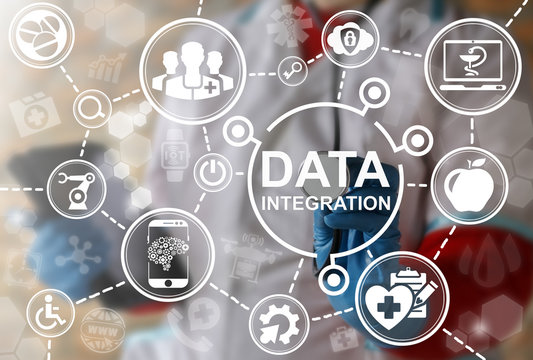What is Data Integration?
How can business intelligence analyses be effectively conducted on data that comes from many different sources and locations, each with its unique formatting standards? Solving that problem is what data integration is all about. Enterprises today generate huge amounts of data in their daily operations. Some of it is produced by the sales, marketing, and customer service arms of the business. Other parts may arise from the company’s financial transactions, or perhaps its research, development, and production activities. Each source contributes its part to a pool of data that, when taken as a whole, can be analyzed to reveal strategically vital information.
What is Data Integration?
Big data, the Internet of Things (IoT), Software as a Service (SaaS), cloud activity, and more are causing an explosion in the number of data sources as well as the sheer volume of data existing in the world. But most of this data has been collected and stored in stand-alone silos or separate data stores. Data integration is the process that brings these separate data collections together to generate higher data value and insights.
Data integration is especially important as your business pursues digital transformation strategies since your ability to improve operations, boost customer satisfaction, and compete in an increasingly digital world requires insight into all your data.

How does it work?
One of the biggest challenges organizations face is trying to access and make sense of the data that describes the environment in which it operates. Every day, organizations capture more and more data, in a variety of formats, from a larger number of data sources. Organizations need a way for employees, users, and customers to capture value from that data. This means that organizations have to be able to bring relevant data together wherever it resides to support organization reporting and business processes.
However, required data is often distributed across applications, databases, and other data sources hosted on-premises, in the cloud, on IoT devices, or provided via 3rd parties. Organizations no longer maintain data simply in one database, instead maintaining traditional master and transactional data, as well as new types of structured and unstructured data, across multiple sources. For instance, an organization could have data in a flat file or it might want to access data from a web service.
The traditional approach to data integration is known as the physical data integration approach. That involves the physical movement of data from its source system to a staging area where cleansing, mapping, and transformation take place before the data is physically moved to a target system, for example, a data warehouse or a data mart. The other option is the data virtualization approach. This approach involves the use of a virtualization layer to connect to physical data stores. Unlike physical data integration, data virtualization involves the creation of virtualized views of the underlying physical environment without the need for the physical movement of data.
A common data integration technique is Extract, Transform, and Load (ETL) where data is physically extracted from multiple source systems, transformed into a different format, and loaded into a centralized data store.
Who needs Data Integration?
Data integration isn’t just for large enterprises. At this point, just about every organization can benefit from a data integration strategy, because every single business needs to be able to use its data to compete effectively. Most businesses use multiple applications to support their business, such as CRMs, accounting applications, asset management systems, and even standard spreadsheet software. Data is locked in silos in each of these applications, which can result in disconnects and miscommunications between departments or processes. If important decisions are based on misinformation resulting from these disconnects, the results will be less than optimal or even detrimental to a business.

Data integration use cases
If a company generates data, it can be integrated and used to build real-time insights that benefit the business. An organization that spans diverse geographies can consolidate views across its entire operation to understand what’s working and what’s not. A singular view of the business makes it easier to understand cause and effect, allowing organizations to course-correct in real-time and minimize risk.
Data integration allows companies to:
- Optimize analytics: Access, queue, or extract data from operational systems – commonly known as data warehousing – then transform and deliver it to the business in the form of trusted analytics.
- Drive consistency between operational applications: Ensure database-level consistency across applications (intra- and inter-enterprise), on a bi- and unidirectional basis.
- Share data outside your organization: Provide trusted data to external parties such as customers, suppliers, and partners.
- Orchestrate data services: Deploy all runtime data integration functionality as data services to ensure speed and accuracy.
- Support data migration and consolidation: Address data movement and transformation needs relative to data migration and consolidation, for example, when replacing legacy applications or migrating to new environments.
Why is Data Integrity important?
Data integrity has become increasingly important as we generate an increasing volume of data. Data integrity is about making sure that your data is recorded and preserved as you intended it to be. And that when you go searching for data, the data set you get is the data set you wanted and expected.
When businesses use analytics tools to inform their business decisions, it’s especially important to be able to trust the data that’s being fed into analytics processes so that you can trust the results. When you put good data in, you get reliable results.
Maintaining a centralized view of all of your data in a single location, such as a cloud data warehouse, can help with data integrity. Data integration efforts help improve the quality and integrity of data over time. As data is moved into the central location, data transformation processes can identify data quality issues and improve the quality and integrity of your data.

Challenges of Data Integration
If data integration is so important and influential on business success, you may be wondering why more businesses haven’t completely adopted the process quite yet. Well, that answer may live within the challenges that result from the process of data integration.
Since there are so many data integration methods, the technical challenges your IT team will come across are unique to each scenario.
However, most problems your team faces are due to the combination of external and internal sources, and the use of cutting-edge or legacy systems.
Additionally, in the past, many businesses relied on intuition when it came to making strategic decisions. These days, businesses should be more focused on making highly data-driven decisions. Intuition is of course still important, but when you have the numbers to prove or disprove a strategy or support a hypothesis, that’s a safe bet to take.
The key is knowing when to tap into data integration.